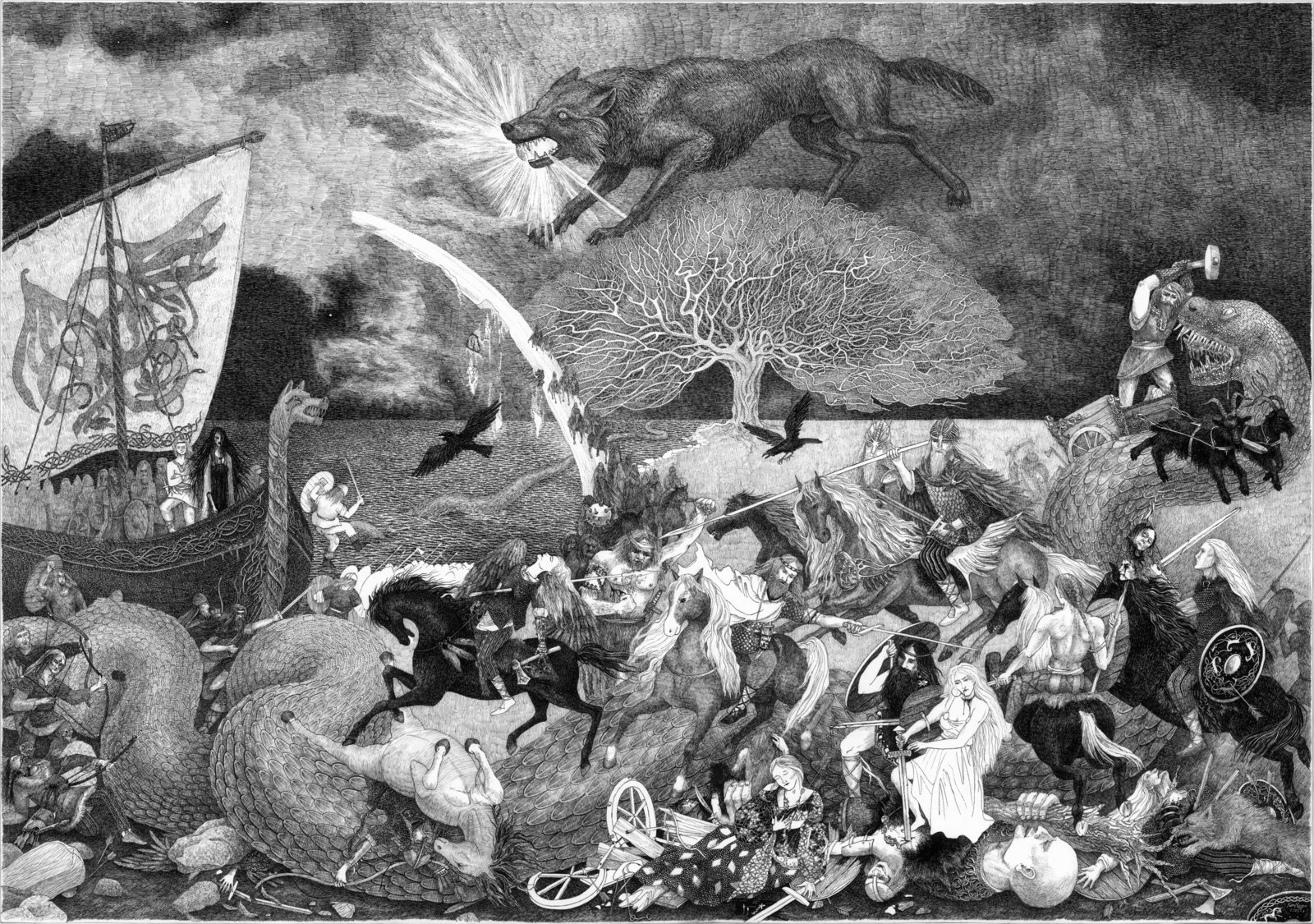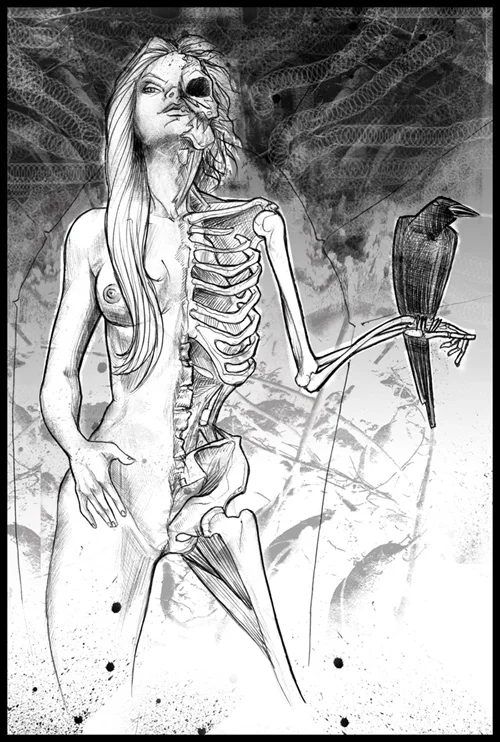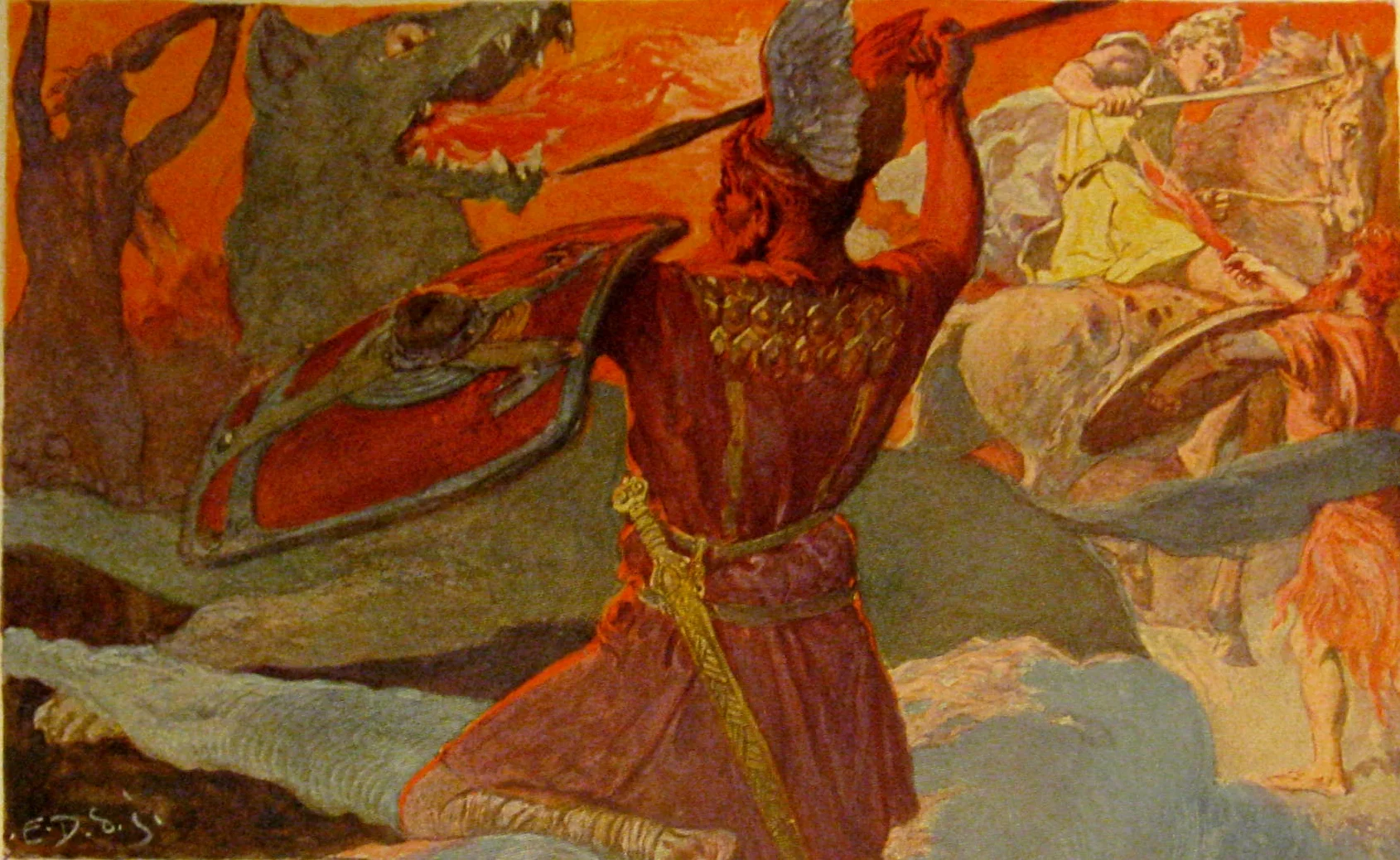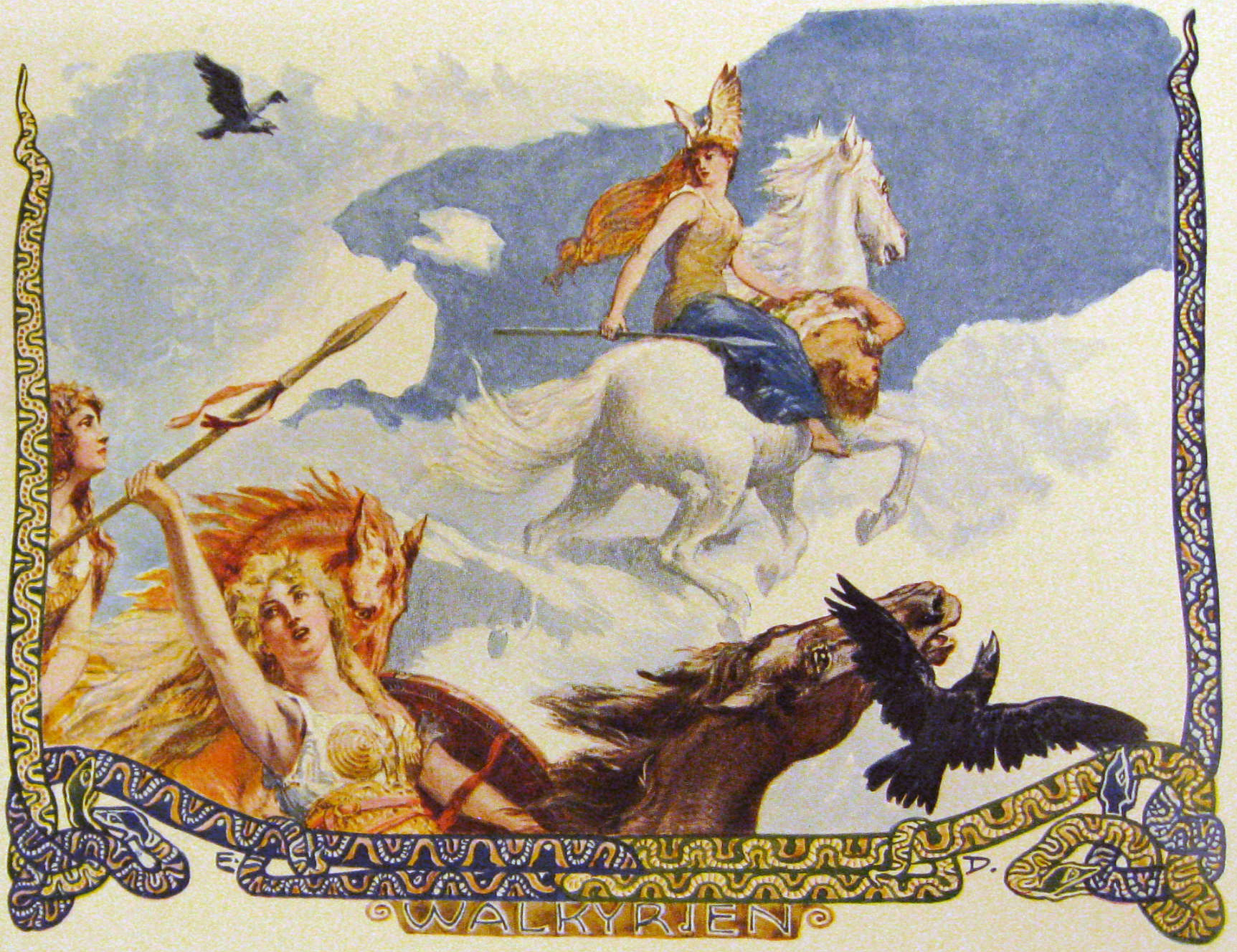Learn the truth about Thor, Hela, Ragnarok, Loki, Odin and Valkyries.
There’s a lot going on during Ragnarok, the Norse version of the apocalypse. In fact, practically everyone dies — before the world is engulfed in flames.
While Thor: Ragnarok was a surprisingly funny intergalactic romp, Marvel’s version doesn’t quite match up to the actual Norse mythology. Here’s a look at some of the big themes from the movie, and how they differ from the legends.
Be warned: Spoilers below.
Hel, the goddess of death, is actually Loki’s daughter, not his sister.
Who was Hela really?
Cate Blanchett’s badass bitch is more commonly called simply Hel (which means “Hidden”) in Norse mythology. And while she is indeed the goddess of death — an extremely powerful one at that — she’s not Thor and Loki’s older sibling. In fact, she’s Loki’s daughter, her mom being the giantess Angrboda, whose name has the pleasant translation of She Who Brings Grief. Hel’s siblings are the monstrous wolf Fenrir and Jormungand, the Midgard Serpent.
“Hel’s putrid stink is a sure sign she’s in the vicinity.”
Hel is half a beautiful woman, half a rotting, skeletal corpse.
The goddess doesn’t have Blanchett’s steely beauty — well, at least half of her doesn’t. Hel is usually depicted as being split down the middle, with one half a young woman, the other half a rotting skeleton, according to Northern Tradition Paganism. Hel’s putrid stink is a sure sign she’s in the vicinity.
Hel rules over a dominion that shares her name (much like Hades in Greek mythology). It’s this word that inspired the Christian version of Hell.
The fire giant Surtur leads the army that battles the Asgardian gods during Ragnarok.
Who’s Surtur the fire giant?
Perhaps not surprisingly, he’s Loki’s godfather, having helped raise that little troublemaker.
The fire giant is more commonly called Surt (“Black”) due to his charred appearance. Instead of being a cool flaming demon as he’s depicted in Thor: Ragnarok, he’s more humanlike in Norse mythology, with a flowing beard.
He carries a flaming sword and has a destiny to fulfill (everyone in Norse myths seems to be playing out preordained roles): Lead his kin and Hel’s undead minions into battle against the gods of Asgard during Ragnarok, the cyclical destruction of the cosmos. Surt sweeps his sword across the earth, leaving nothing but an inferno. He killed the god Freyr, who in turn offed him. Few survived Ragnarok.
Everyone seems to kill each other during Ragnarok, including Thor and the Midgard Serpent.
What exactly is the Ragnarok prophecy?
The “Doom of the Gods” is an appropriate name for the Norse version of the end of the world.
Like the Christian apocalypse described in the book of Revelation in the Bible, Ragnarok, too, is foretold by a series of omens, starting with a Great Winter (how very Game of Thrones) that lasts for three years, brought on after humans and even the gods have sunk into nihilism.
Then come the three cocks. One red rooster warns the giants that Ragnarok has begun, while a second alerts the dead. The third, which resides in Valhalla, the majestic drinking hall afterlife for heroes, lets the divine partiers know their fun has come to an end.
Even though Odin could foresee that there was no defeating Surt and his army, he and the gods still fought valiantly. During this epic war, the world is utterly destroyed and sinks into the sea. The end.
And yet it’s not the end. A new world rises from the depths of the water, and two mortals will repopulate the Earth.
The giant wolf Fenrir kills Odin, swallowing him whole during Ragnarok.
How does Odin really die?
Though he was prone to wander, Odin doesn’t go off to Norway to die (after his rest home gets destroyed) and dissolve into gold dust. Instead, he perishes during the battle of Ragnarok.
The naughty Fenrir was kept chained up — until he escaped to wreak havoc during Ragnarok.
Fenrir, the massive wolf who’s Loki’s son and Hel’s brother, has been a bit too wild and has been chained up by the gods. He escaped, though, and “ran across the land with his lower jaw on the ground and his upper jaw in the sky, consuming everything in between. Even the sun itself was dragged from its height and into the beast’s stomach,” according Norse Mythology for Smart People. He also swallows Odin whole, ending the life of the Father of the Gods.
You wouldn’t want to fight Thor, especially when he’s armed with his hammer Mjollnir.
Do Loki and Thor have a troubled relationship?
In a word, hell yes — though they did bond once in a cross-dressing ruse to win back Thor’s hammer, Mjollnir.
“Thor and Loki did bond once in a cross-dressing ruse to win back Thor’s hammer, Mjollnir.”
Loki convinces the manly Thor to dress up as a woman to pretend to be the goddess Freya (it’s a long story).
Loki is a trickster, so you never know what to expect. He’s likely to cause damage — in fact, at the time of Ragnarok in Norse mythology, he’s been chained inside a mountain as punishment for his involvement in the death of the god Balder, a favorite of the Asgardians. (Loki gave his blind brother Hod a mistletoe dart — the only thing that could harm Balder — and guided his aim so it struck and killed the deity.)
But Loki’s also known to actually help the gods as well. The Marvel universe has captured his mercurial spirit; you never know if he’s on Thor’s side — and you know you should never fully trust him.
During Ragnarok, Loki breaks free of his chains and launches an attack on his Asgardian brethren, sailing on a ship that’s somehow constructed of dead men’s nails. Eww.
In some versions of the myth, it’s Loki and not his daughter Hel who leads the army of the undead.
Thor defeats the massive serpent Jormungand — but perishes from its poison right after.
Loki’s offspring Jormungand and the god of thunder have an intertwined destiny. The two have always been bitter enemies, and the serpent is a formidable foe: He’s so large that he encircles the Earth, biting his own tail — what’s known as an ouroboros. During the apocalyptic war of Ragnarok, Thor kills the Midgard Serpent — only to die from its poison. There’s a lot of these double deaths going around.
The Valkyries choose who lives and dies in battles.
What’s the truth about the Valkyries?
These fierce, beautiful maidens ride in groups of nine upon flying horses and guide fallen heroes to Valhalla for Odin.
Scandinavians in the Middle Ages believed the gorgeous streaks of the Northern Lights, or Aurora Borealis, were the Valkyries sweeping across the night sky, according to Credo.
LEARN MORE ABOUT THE NORTHERN LIGHTS: Why You Should Consider Visiting Iceland
A common misconception is that the Valkyrie are warriors — probably because they’re decked out in armor, are often depicted holding spears and like to hang out on battlefields.
“The meaning of their name, ‘choosers of the slain,’ refers not only to their choosing who gains admittance to Valhalla, but also to their choosing who dies in battle and using malicious magic to ensure that their preferences in this regard are brought to fruition,” writes Norse Mythology for Smart People.
The Valkyries were fierce woman who soared over battlefields on flying horses — until they were relegated to waitresses at Valhalla.
While they started out as dark angels of death swooping over the slaughter of a battlefield, the Valkyries later became associated as Odin’s shield maidens, lovely virgins with golden hair and snow-white skin who serve an all-you-can-eat-and-drink buffet of mead and meat in the great feasting hall in the sky. Dead heroes remained there until called to fight by Odin’s side during Ragnarok.
Marvel’s version of Ragnarok might be a bit off-base, but it’s still a fun one nevertheless. And as much as I’d love to have seen Loki captaining that ship of yellowed fingernails and toenails, I’m glad that hottie Chris Hemsworth’s Thor survives to star in another movie. –Wally
“During Ragnarok, Loki launches an attack on Asgard, sailing on a ship constructed of dead men’s nails. Eww.”



































